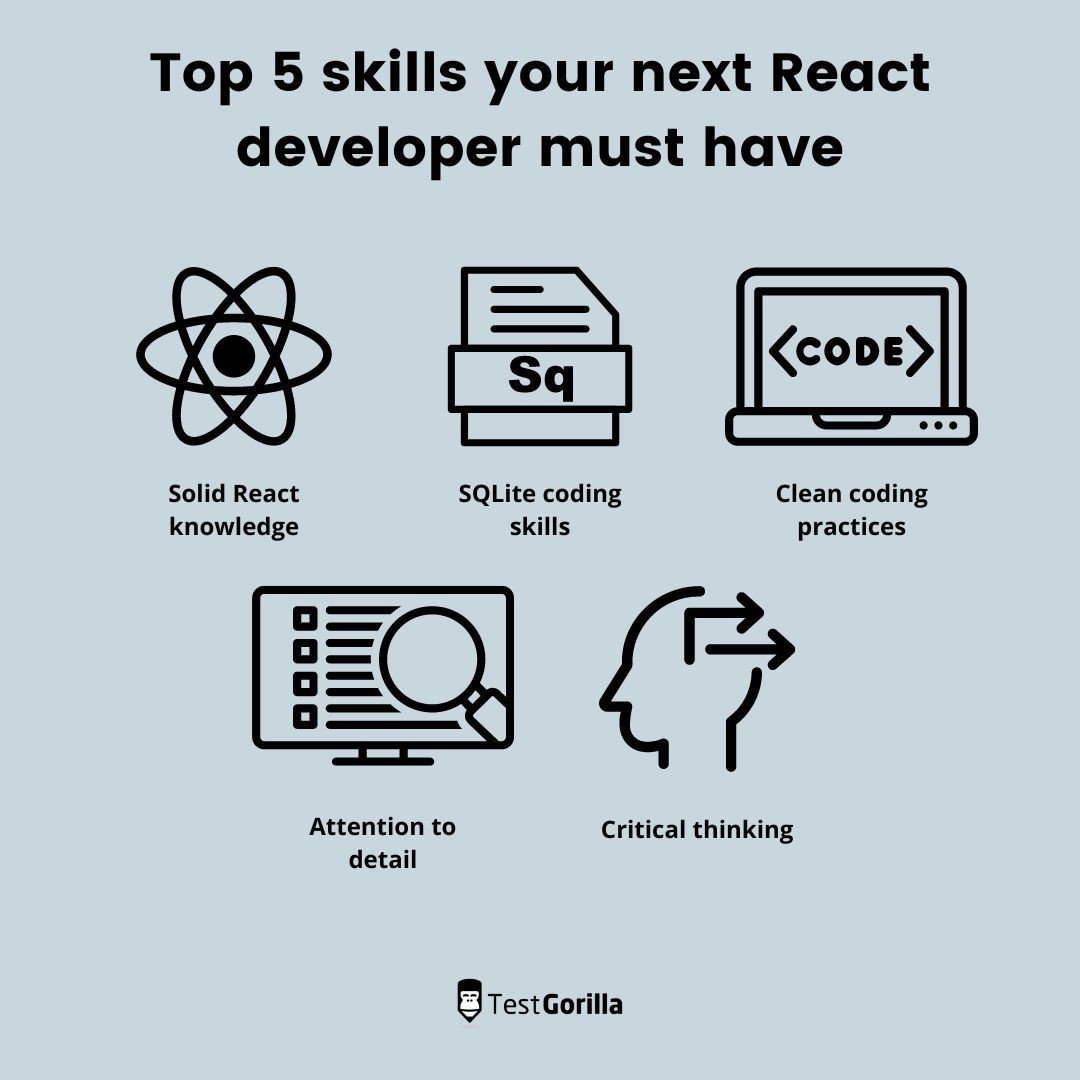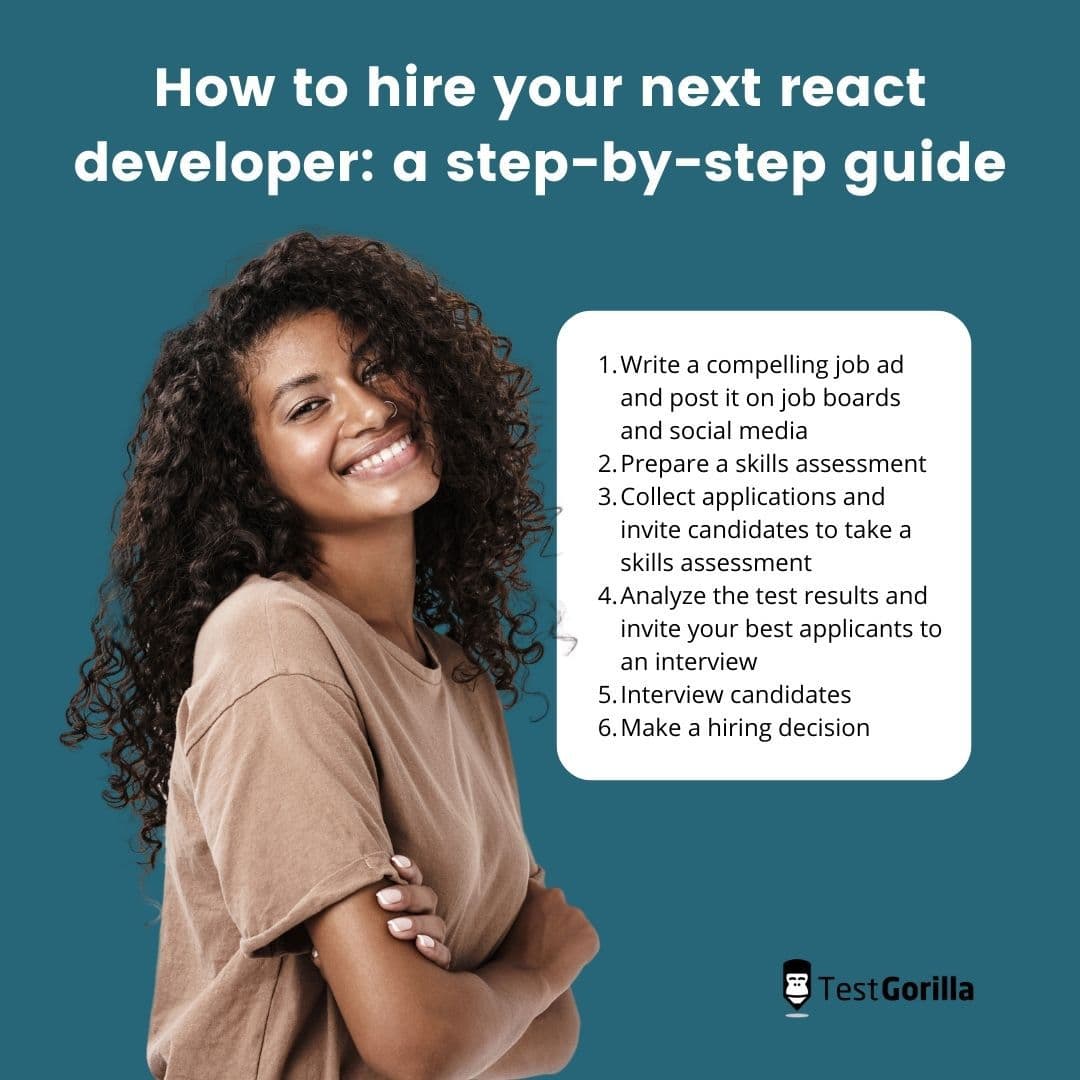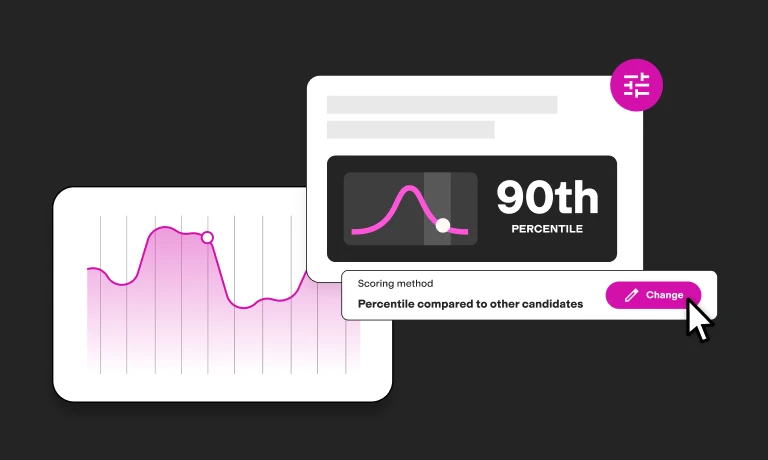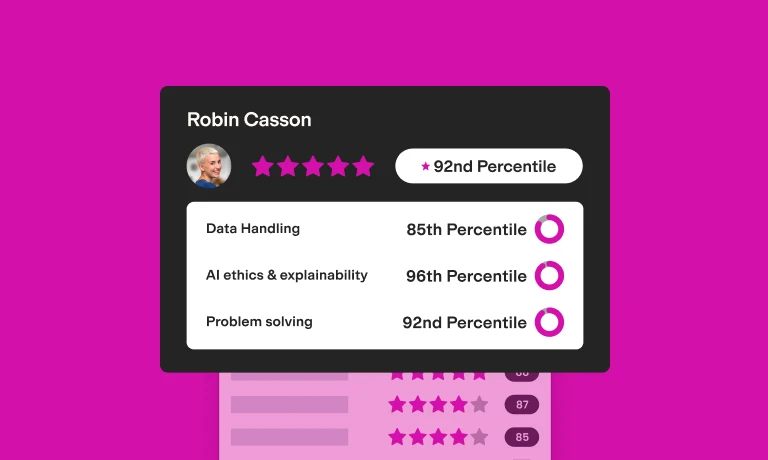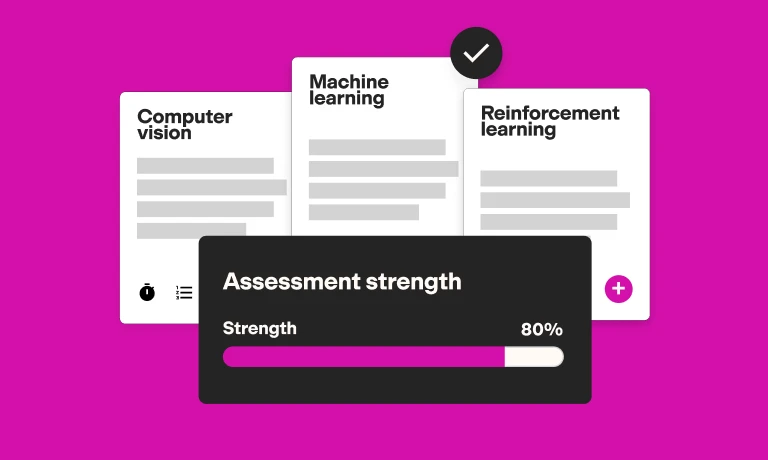React is a user interface development library run by Meta (formerly Facebook) and an open-source developer community that has been gaining traction in recent years.
It is based on JavaScript and used for website development by countless organizations worldwide, which also means that there is a lot of competition when it comes to hiring talented React developers.
If you’re looking to hire your next React developer but don’t know where to start, this article is for you.
We’ll explain how to use skills tests to make the applicant-evaluation process effortless, which tests to pick (hint: always include a React online test), and the benefits of React.
Let’s dive in.
What are the key benefits of React?
Nowadays, React outshines all other front-end frameworks. It was the most used development framework among software developers in 2021, and developers have used it to build more than 15 million websites. React also offers useful extensions for architectural support, such as Flux.
Here is what makes React such a best seller:
Ease of use. Code is easier to write and maintain in React than in vanilla JavaScript. React is also relatively simple to learn for developers who are already familiar with JavaScript.
Reusable components. React applications are made up of components that possess their own internal logic and controls. You can reuse these components throughout an app, which saves a lot of time since you don’t have to write different code to implement the same features.
Faster rendering. React introduces the virtual DOM (Document Object Model) so that developers don’t need to modify the DOM manually. The virtual DOM is an abstraction of the DOM that identifies any changes you make to components and chances the DOM to match the new state. This makes rendering dynamic and heavily loaded applications faster and safer since only minimal changes are made to the DOM.
Many popular websites that include a wide array of functions are built with React. Some notable examples of well-known companies that use the framework are:
Walmart
Netflix
The New York Times
Uber
Airbnb
A Quess report claims a 184% increase in the number of open positions for React developers from 2019 to 2020.
With that kind of demand, it’s getting harder to find qualified React developers. The framework has many functions and can prove to be of great use but only in the hands of a professional who knows how to use it effectively.
You will have to filter many underqualified applicants since React is relatively easy to get started with, and many less experienced developers prefer to use it. Implementing React developer tests in your recruitment process can help you make the right hire for your business.
Top 5 skills your next React developer must have
First, it’s important to identify the top React developer skills you need to look for in your candidates.
TestGorilla’s React developer tests can measure these skills to give you an accurate idea of what the applicants can do for your company.
Here, we’ll go through the top five skills a professional React developer needs.
1. Solid React knowledge
Of course, hard skills are vital for any developer role. React enables programmers to build complex and engaging web applications – but only if they have the skills and experience to use it properly.
Our React test evaluates applicants’ skills without bias. Any developer with two to three years of experience with React should be proficient with the features covered in the test, such as advanced hooks, design patterns, and state management.
2. SQLite coding skills
SQL is the most widely used query language for dealing with relational databases. It helps developers create efficient software by structuring and leveraging data.
TestGorilla’s SQLite test assesses candidates’ ability to deal with a real-life scenario that requires them to work with a complex database structure. The objective is to create a query that serves as a report with key insights from the provided data.
Although React is used for front-end development and SQLite for the back end, the ability to join and filter results is valuable for any developer.
Applicants should be able to manipulate data while taking many different details into account. This skill might be especially useful to you if you’re looking for someone with full-stack development experience.
3. Clean coding practices
Having an employee who writes clean code can make the difference between wasting a ton of money on a project that takes far too long or doing it right on the first try.
The last thing you want your developers to do is to write spaghetti code. They should understand and follow the YAGNI, SOLID, and DRY principles to create efficient and easy-to-understand code.
4. Attention to detail
Noticing patterns, identifying small mistakes in a long string of code, and memorizing elaborate commands are a core part of a React developer’s job.
These abilities require well-developed attention to detail, a skill that is often underrated when it comes to hiring developers and tech personnel. Solving subtle problems is significantly easier when you’re able to notice small details that are out of place.
5. Critical-thinking skills
Critical-thinking skills set a developer apart in their field. They’re vital for solving problems effectively and challenging requirements to improve applications.
The better a developer is at critical thinking, the less they rely on assumptions and make easily avoidable mistakes.
The best insights on HR and recruitment, delivered to your inbox.
Biweekly updates. No spam. Unsubscribe any time.
How to hire your next React developer: a step-by-step guide
Now that you’re already aware of the skills to look for in a React developer, here are the steps to finding one for your team.
1. Write a compelling job ad and post it on job boards and social media
The first step to hiring a highly skilled React developer is writing a compelling job ad. The job ad is a candidate’s initial glimpse into the position and your opportunity to make a good first impression.
Think carefully about how to word the job description clearly and thoroughly so that potential applicants can determine whether they are the right fit for the role.
Describing your ideal employee can help candidates evaluate whether they would be a good match for your company. It’s also a good idea to include the salary range and benefits you will offer the successful applicant.
Make sure to carefully choose the job boards and social media platforms on which you post the job ad.
Do React developers use the platform? Have you written and structured the ad in a way that appeals to them? What will give you the optimal reach? These are all questions you should answer if you want to hire the right React developer.
2. Prepare a skills assessment
You can’t take a one-size-fits-all approach to building a skills assessment. Instead, you need to select tests that are based on the work responsibilities and everyday tasks of the role.
Does a given skill relate to the employees’ performance? How often will they use it? Is it more important than another skill? There are many specific details that you’ll need to take into account.
Fortunately, you can select from TestGorilla’s job-specific tests for React developers. These tests were handpicked by professionals and are easy to integrate into your recruitment process.
With TestGorilla, you can add up to five tests to a skills assessment. Here are some ideas for tests that will help you hire a qualified React developer:
React test. The most important skill to assess is your applicants’ proficiency in React. With this test, you can evaluate whether your candidates understand the most important concepts in React and can use them in their work.
Clean Code test. This test focuses on candidates’ ability to write simple, readable code that follows the SOLID, DRY, and YAGNI principles. Does your candidate know what it means to write clean code? How well can they select and use different implementation strategies?
Critical Thinking test. The test uses inductive and deductive reasoning problems to evaluate applicants’ critical-thinking skills. Can they understand cause-and-effect relationships, interpret sequences effectively, and recognize assumptions?
Attention to Detail test. It’s essential for React developers to pay attention to textual details while processing information. This test evaluates candidates’ ability to match and filter information and identify errors and inconsistencies. Using this test is a great way to assess an applicant’s overall analytical skills.
3. Collect applications and invite candidates to take a skills assessment
After you collect applications, you can invite the candidates to complete the pre-employment tests you have prepared for them. The best way to ensure developers interested in the job will take the assessment is to include info about it in the job ad.
If you’re using an applicant tracking system, you can save time by sending a link to the test directly to those who meet some basic requirements, such as having a certificate or two years of relevant experience.
Alternatively, you can simply send the test to all applicants and see who performs best.
4. Analyze the test results and invite your best applicants to an interview
Evaluating your candidates’ test scores will help you shortlist those who are most suitable for the job.
You can also use the test results to create more personalized interview questions. If a developer underperforms in a certain area but excels in the rest, you can invite them for an interview and ask more about the skill they’re weak in to gain insight into whether they have the potential and motivation to develop it.
Additionally, you can devise a personalized strategy to develop your new employee’s skills in a way that makes the most of their strengths and helps them grow out of their weaknesses.
5. Interview candidates
After you’ve picked the most promising React developers based on the results of the skills assessment, it’s time to interview them personally.
Use the information you gained about their abilities to ask specific questions, and follow up to develop a complete picture of how they will perform in your organization. Make sure you’re on the same page about the salary for the position.
6. Make a hiring decision
After you’ve successfully completed the steps above, there is just one thing left to do: Choose who you’re going to hire.
Hiring an effective React developer can be complicated, but with the right tools and strategy, you can make the best choice for your business.
Hire the best React developer for your team with the help of skills tests
Now that you know how to use skills tests to your advantage, you can start building your first skills assessment to hire the most skilled and suitable React developer.
Make sure to include a React test in your assessment in combination with other skills tests relevant to the role you’re looking to fill.
And remember: Recruitment is a process that can always be re-evaluated and improved. Keep an open mind, accept that you can always learn from past mistakes, and use skills assessments and a clear strategy to hire efficiently.
Related posts
You've scrolled this far
Why not try TestGorilla for free, and see what happens when you put skills first.


